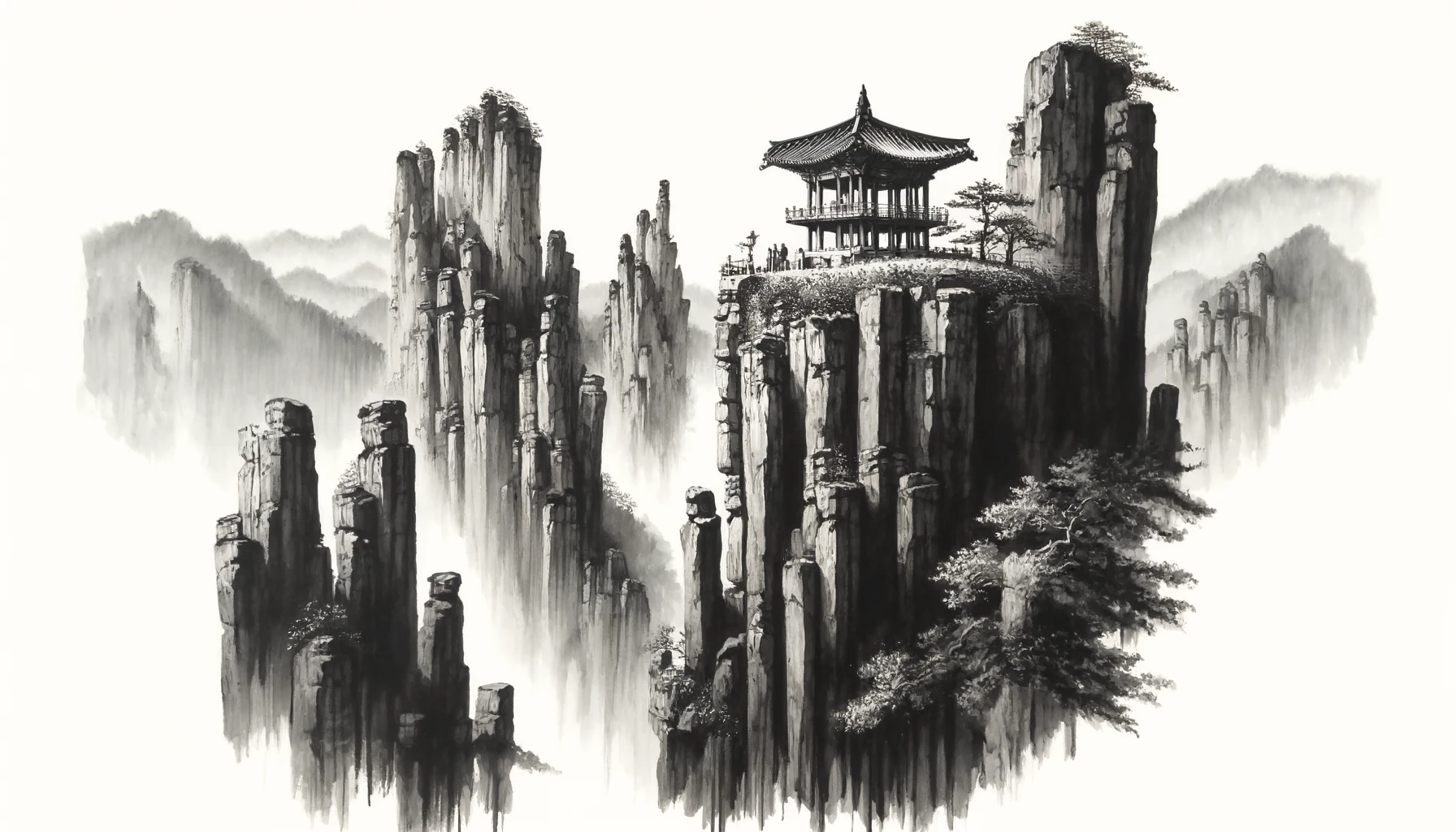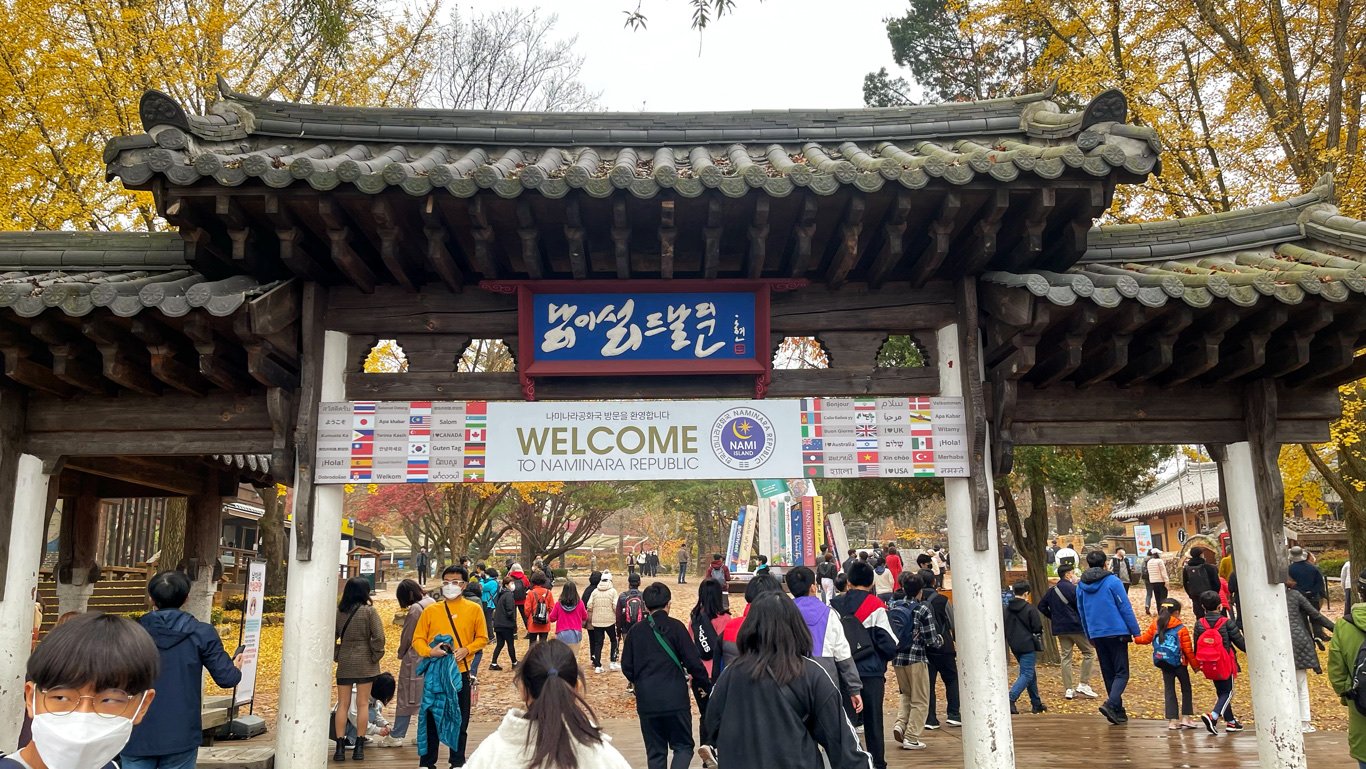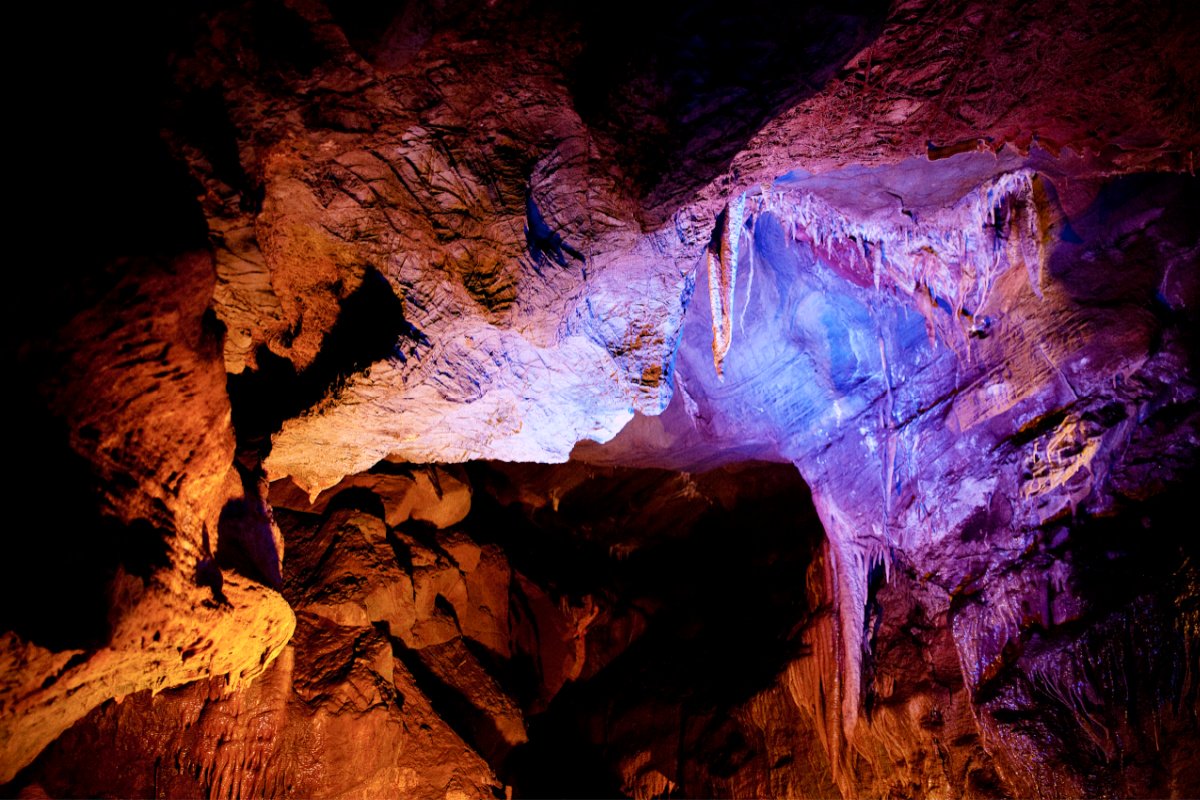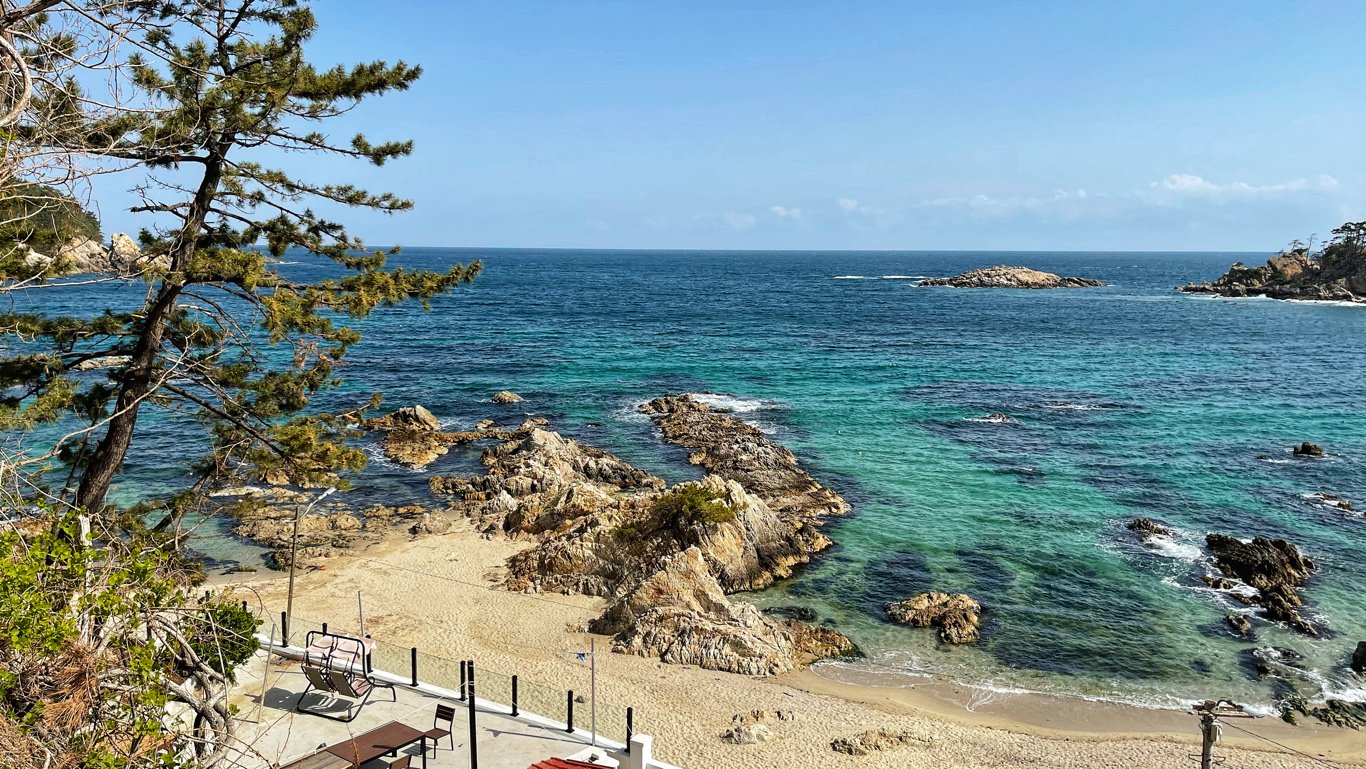Chongseokjeong Rocks
in Tongcheon
 Black ink and brush painting depict Chongseokjeong Rocks in Tongcheon and the pavilion atop the hexagonal rock columns.
Black ink and brush painting depict Chongseokjeong Rocks in Tongcheon and the pavilion atop the hexagonal rock columns.Chongseokjeong Rocks in TOngcheon
Chongseokjeong (總石亭) is a breathtaking scenic spot in Tongcheon-eup, Tongcheon County, Gangwon Province (North) of the Democratic People's Republic of Korea.
It's situated along the East Sea coast and north of Geumgangsan. The name Chongseokjeong refers to the pavilion erected among these stones.
But in a broader sense, it refers to the rock columns and cliffs composed of numerous vertical stone pillars. It's ranked first among the eight scenic spots of Gwandong and is a must-visit attraction for tourists.
Chongseokjeong Rocks in Tongcheon is a geological formation from the Silla period and is currently the 13th scenic spot and the 214th natural monument in North Korea.
Chongseokjeong is a natural monument in Tongcheon County, Gangwon Province (North). It is about 2km away from Tongcheon Harbor and can be easily accessed by visitors.
The National Federation for the Protection of Nature designated it the 214th natural monument on December 25, 1982, due to its academic value and outstanding natural scenery.
It's currently under protection and management to preserve its unique beauty and natural ecosystem.
Rock Columns Formation
The cliffs are composed of hexagonal and octagonal columnar joints, which are vertically or slightly inclined.
Over time, weathering and erosion have formed the cliffs, resembling columns erected on the sea. The stone columns and cliffs are so mysteriously shaped that it's hard for people to imagine.
Dozens or hundreds of stone columns are densely packed and divided into right, left, and central columns based on appearance. In between, strangely shaped rocks add to the place's charm.
The sea around Chongseokjeong Rocks in Tongcheon has become a concentrated habitat for various marine species, such as abalone, sea cucumbers, mackerel, saury, octopus, sea bass, and sea bream.
Additionally, lush pine trees grow in the area, adding to the beauty of the scenery. Visitors can enjoy the stunning views of the sea and the cliffs, go fishing, hike, or relax in the peaceful surroundings.
Since ancient times, residents have called the stone columns made of basalt 'chongseok,' later, they named the pavilion on Chongseok Pass after the name of the pavilion on the mountain pass, Chongseokjeong.
The cliffs and columns of Chongseokjeong Rocks in Tongcheon are so fascinating and beautiful, enhancing the scenery of the East Sea remarkably.
Therefore, people have also called Chongseokjeong 'Tongcheon Geumgang,' which means "Geumgang of Tongcheon." In particular, watching the sunrise over the East Sea from Chongseokjeong is enchanting and an unforgettable experience.
8 Scenic Spots of Gwandong
Chongseokjeong has been famous for its outstanding scenery since ancient times, especially among the eight scenic spots of Gwandong.
The eight scenic spots of Gwandong include Chongseokjeong Rocks in Tongcheon, Cheongganjeong in Gangseong, Samilpo in Goseong, Naksansa in Yangyang, Jukseoru in Samcheok, Gyeongpodae in Gangneung, Wolseongjeong in Pyeonghae, and Mangyangjeong in Uljin.
These spots were designated as such in the eastern part of Daegwallyeong.
Still, Mangyangjeong and Wolseongjeong are currently included in Gangwon Province, while Samilpo, Chongseokjeong, and Sijungdae are located in North Korea.
The coastal region of Gangwon Province is renowned for its scenic spots, especially in the Eight Scenic Spots region, where there are many pavilions and platforms for enjoying the scenery and composing poems.
Over the years, many legends have been passed down. According to the "Dongguk Yeoji Seungnam," during the Silla Dynasty, four immortal beings named Sulang, Nanglang, Yeonglang, and Ansanglang came to Chongseokjeong.
They played, calling the four rock pillars the "Four Immortal Peaks." It is said that monks wrote about the fun they had here and carved it on a stele next to the pavilion, but now the inscription needs to be out, and its contents cannot be deciphered.
History, Stories & Legends
The name "Chongseokjeong" for the pavilion means a pavilion erected on top of densely rising rock pillars above the sea.
According to "Haedong Yeoksa (History of Eastern Sea)" by Han Chi-yoon (1765-1814), "Dozens of stone pillars stand in the middle of the sea. The pillars are all hexagonal as if carved and chiseled like jade."
He explained the origin of the pavilion's name, saying, "Since four pavilions are looking at the sea on the coast, it is called Chongseokjeong."
The stone pillars of Chongseokjeong Rocks in Tongcheon appear to be densely piled up or individually rooted in the sea, forming strange shapes due to prolonged erosion by seawater and wind.
It is said that ancient stonemasons polished them for a long time, bundling some and erecting several. You can also see various rocks of various shapes, such as Saseonbong.
The cliffs and rocks near Jwacho are a fascinating sight to behold. They appear to be piled up like a stack of stones but are hexagonal or octagonal stone columns formed from basalt lava that erupted from the sea.
Over the years, weathering and erosion caused by storms and waves have polished their surfaces and caused them to break off. There are three categories of stone pillars: left-sided Wacho (臥叢), right-sided Jwacho (坐叢), and Incho (立叢) in between. The peculiar rocks and pine trees atop the stone columns add to the mystery and beauty of the area.
Jwacho was also called "Tongcheon Geumgang (通川金剛)" because of its magnificent scenery, which included the vast sea and spectacular sunrise.
Since ancient times, poets and literati have visited Jwacho to admire its beauty and have left many works praising its splendor. Among the notable visitors were Kim Geuk-gi and An Chuk from the Goryeo Dynasty, and Seong Hyeon, Yi Dal, and Kim Chang-eop from the Joseon Dynasty.
An Chuk, in his poem "Gwandong Byeolgok (關東別曲)" Chapter 3, vividly describes Jwacho in detail. He visited the place on his way back from his position as the governor of Gangwon Province in 1330 (during the reign of King Chungsuk).
During the Joseon Dynasty, Jeong Cheol, while serving as the inspector of Gangwon Province in 1580 (in the 13th year of King Seonjo's reign), toured Naegeumgang, Oegeumgang, Haegumgang, and the Eight Scenic Views of Gwandong, and expressed his feelings in the song "Gwandong Byeolgok."
He even dedicated a stanza to the scenery of Jwacho. Jwacho was the most popular place among the Eight Scenic Views of Gwandong. In "Nongamji (農巖集)" by Kim Chang-hyeop, it is mentioned that when returning home after touring Geumgangsan Mountain, the military governor advises:
"Even if you can't see all the Eight Scenic Views of Gwandong, you should visit places like Jwacho and Samilpo for just a few days."
Jwacho was restored by Kim Yeong-je in 1934 during the Japanese colonial period, and a plaque called "Jwacho" remains, created by the calligrapher Jang Hong-sik and the modern artist Haegang Kim Gyu-jin.
Many painters during the Joseon Dynasty were fascinated by the scenery of Jwacho and left behind many paintings.
Gyeomjae Jeong Seon, while traveling to Geumgangsan Mountain and serving as the county magistrate of Cheongha (清河: old name of Pohang), also toured the Gwandong region and depicted the scenery of Jwacho in his paintings.
In 1711, Jung Sun, at the age of 36 and under the reign of King Sukjong, went on a tour of Geumgangsan Mountain with his teacher, Kim Chang-hyup, also known as Samyeon, and his students.
With his friend Sacheon, Lee Byeong-yeon, who had been appointed as the governor of Geumhwa County in Gangwon Province, Jung Sun traveled to the location.
After touring the mountain, Jung Sun left behind a series of 13 paintings called "Shinmyo-nyeon Pungakdocheop," which contained the "Chongseokjeong," a single-story octagonal pavilion with four stone columns rising next to it.
The pavilion stands on a cliff facing the sea, with a roof, three bays on the front, and three bays on the side. A stele is placed next to the pavilion. The painting vividly depicts waves crashing against the cliffs, creating white foam. The "Chongseokjeong" is currently housed in the National Museum of Korea.
At 37 in 1712, the following year, Jung Sun joined Lee Byeong-yeon's father, Lee Sok, and his three sons on a second tour of Geumgangsan Mountain.
Upon his return, Jung Sun created a series of 30 paintings called "Haeakjeonsincheop," which included the "Chongseokjeong," but it has not been passed down to the present.
In 1738, during the reign of King Yeongjo, Jung Sun compiled the "Gwandong Myeongseungcheop," which included the "Chongseokjeong."
Between 1721 and 1726, while serving as the governor of Cheongha County, Jung Sun, along with his friends Lee Byeong-yeon and Lee Byeong-Seong, who was appointed as the military governor of Gancheong, traveled through the eastern coastal area of Guangdong, capturing its scenery in his paintings.
Later, at 63 in 1738, Jung Sun rearranged his paintings into 11 paintings called "Gwandong Myeongseungcheop," now housed in the Gansong Art Museum. An undated painting of the "Chongseokjeong" also exists in private possession.
Tanwon Kim Hong-do, a monk, also painted several depictions of the Chongseokjeong. In the "Geumgangsaguncheop," painted in 1788 under the reign of King Jeongjo, a royal command, the Chongseokjeong is included.
The painting was created based on sketches made during Kim Hong-do's travels with Kim Eung-hwan to Geumgangsan Mountain and the Gwandong Eight Scenic Views region.
Based on these sketches, Kim Hong-do presented two versions, the manuscript version and the colored scroll version, to King Jeongjo. This painting is privately owned.
In 1795, another painting of the Chongseokjeong by Kim Hong-do was included in the "Eulmyo-nyeonhwacheop," housed in the Samsung Leeum Art Museum.
The Gwandong Eight, Scenic Views paintings, were popular among the Yangban literati and the ordinary people. They were often depicted in folding screens or folk paintings.
An anonymous work, presumed to have been painted in the late Joseon period, titled "Gwandongpalgyeongdo," represents the scenic spots of Gwandong, including the Chongseokjeong. This artwork is housed in the National Museum of Korea.
Another folding screen painting, "Gwandongpalgyeongdobyeong," created by the Joseon literati Huh Pil (1709-1761), also features the Chongseokjeong and is preserved in the Sunmoon University Museum.
Furthermore, paintings of the Chongseokjeong by various artists, such as Lee In-mun (1745-1821), Jung Soo-young (1743-1831), Lee Jae-gwan (1783-1837), Kim Ha-jong (1793-?), and Kim Gyu-jin, are also available.
Kim Gyu-jin's "Chongseokjeong Scenic Painting," created in 1920 and attached to the walls of the Huijeongdang Hall in Changdeokgung Palace, is particularly notable.
It combines traditional palace painting techniques with modern approaches to capture the panoramic beauty of the Chongseokjeong.
The Chongseokjeong is known as one of the Gwandong Eight Scenic Views and has been renowned as a scenic spot in our country for its uniquely shaped cliffs and rock formations.
Each rocky pillar along the seaside has its distinct posture: those standing upright are called "Ibchong," those sitting are "Jwachong," and those lying down are "Wachong."
According to legend, the rocky pillars of the Chongseokjeong, formed by volcanic activity, were smoothed over time by seawater and coastal winds, inspiring ancient stonemasons to shape them into various forms. Some were arranged in clusters, others individually, and some were planted into the seabed.
There are various rock formations around the Chongseokjeong Rocks in Tongcheon, such as Sasanbong. In this rock formation, four deities supposedly played a stone bridge that was being carved to connect the rocky pillars of the Chongseokjeong to the Dragon Palace but was abandoned due to the allure of its beauty and various other rocks like Bubuam and Geobukbawi.
Representative scenes include...
- The Chongseokjeong illuminated by the sunrise and bathed in moonlight at night.
- Various birds nesting on the cliffs of the Chongseokjeong.
- Pine trees resiliently grow with sturdy roots despite frost and strong sea winds.
- The spectacle of waves crashing against the rocky pillars, creating myriad water sprays.
Currently, the Chongseokjeong is a cultural and recreational area for workers.
References:
- "Chongseokjeong," Wikipedia
- "Chongseokjeong," Namuwiki
- "The Foremost of Gwandong Eight Scenic Views, Chongseokjeong in Tongcheon," Regional Culture Theme
- Kim Jun-ok, "Chongseokjeong, the Foremost Scenic Spot in Gwandong," Seoul Pyongyang News, October 18, 2021
- Lee Seung-hyun, "Hexagonal and Octagonal Rock Pillars with Intricate Designs... Chongseokjeong, a Famous Scenic Spot in the East Sea," Unification News, October 16, 2022
- "Chongseokjeong," North Korea Regional Information Net
http://wiki.hash.kr/index.php/%EC%B4%9D%EC%84%9D%EC%A0%95
- Home
- Gangwondo Attractions
- Chongseokjeong Rocks In Tongcheon
Get Exciting Activities
Book one of our exciting activities today to experience the thrill of a lifetime! Take advantage of this opportunity and secure your spot in advance.
Hotel Map Guide
Find your affordable, accessible, and comfortable hotel in Seoul at Agoda.Com. See the hotel map below...
Hotel Booking Guide
Find affordable and amazing hotels on Agoda.com using the search box below. Book now to enjoy great discounts and save!







New! Comments
What do you think about this page? Leave me a comment in the box below.